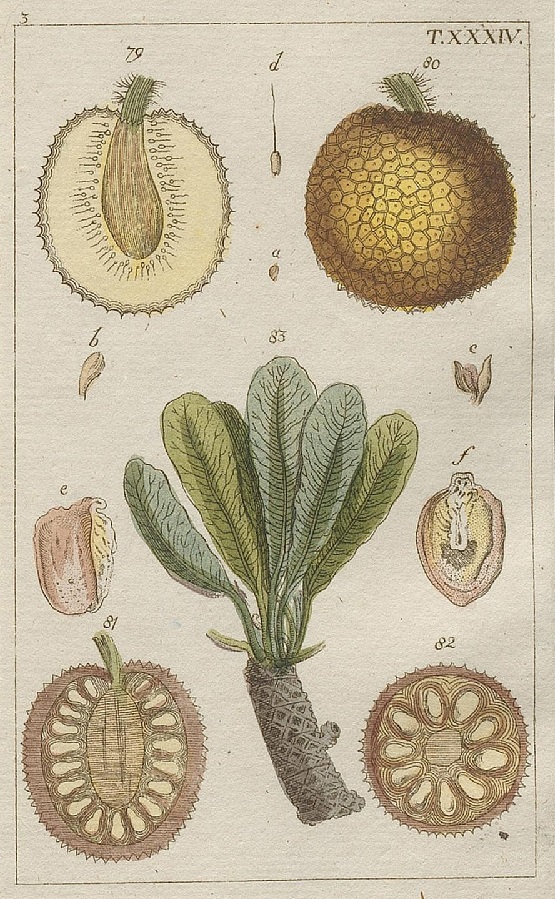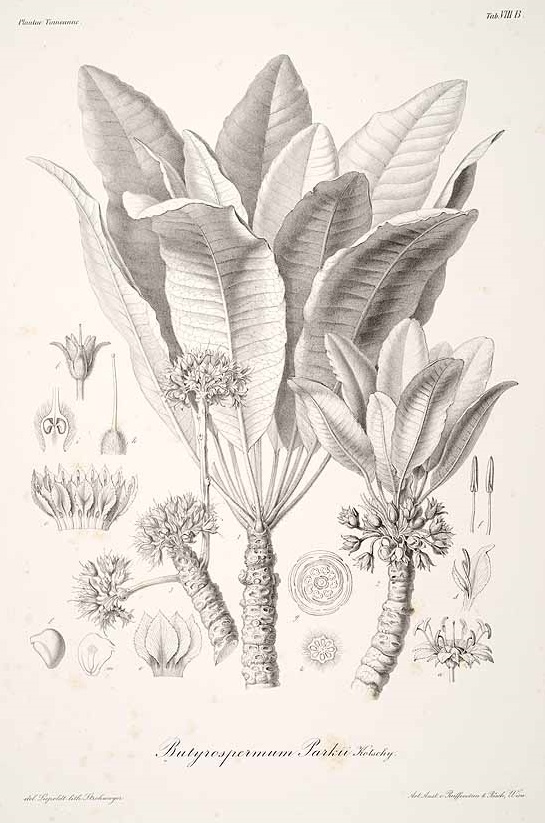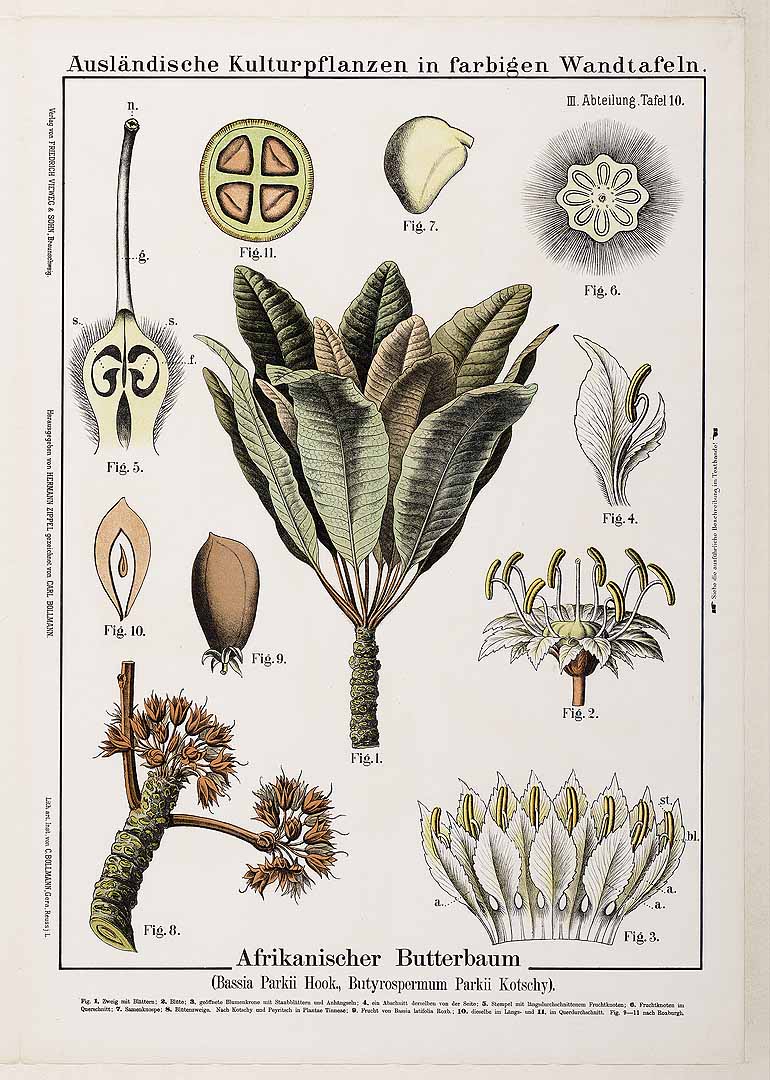! Nouveau site ici !
Vita > Plantae > Magnoliophyta > Magnoliopsida > Ebenales >
Sapotaceae > Vitellaria
Vitellaria paradoxa

 | **** - *****
| **** - *****
Vita > Plantae > Magnoliophyta > Magnoliopsida > Ebenales >
Sapotaceae > Vitellaria
Vitellaria paradoxa

Un arbre à feuilles caduques. Un arbre compact qui perd ses feuilles au cours de l'année. Il atteint 15-25 m de haut et a une couronne étalée. Le tronc est court et robuste et peut mesurer 2 m de diamètre.... (traduction automatique)
→suite
⬀
Le  donne accès au menu
donne accès au menu (c'est votre point de repère) 😊 ;
En dessous vous avez la classification, à partir de la vie (Vita, premier rang) jusqu'à la classe au dessus de la plante, dont vous trouvez ensuite le nom scientifique/botanique (latin) puis le nom commun (français), le cas échéant ;
C'est aussi un lien vers la fiche complète (tout comme la ✖, en bas à droite, et le +, en dessous de la description) ;
Vient alors l'illustration (ou ce qui la remplace, en attendant), la comestibilité :
Et en bas
⬂







